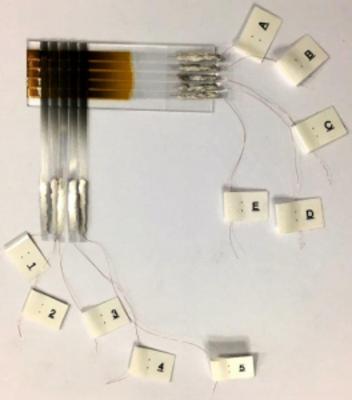Researchers from the University of Strasbourg & CNRS (France), in collaboration with Adam Mickiewicz University in PoznaÅ (Poland) and the University of Florence (Italy), have developed a new generation of pressure sensors based on graphene and molecular springs. The researchers say that thanks to their highest sensitivity, these devices are ideally suited for health monitoring and point-of-care testing.

The team reports that many electroactive materials have been employed for this purpose. Among these, graphene has been the most studied because of its excellent electrical conductivity, exceptional mechanical properties and large surface area. The researchers rely envision applications of graphene-based sensors in the form of tattoos.
The researchers have demonstrated that by fabricating an extremely sensitive pressure sensor, they can measure with a high resolution the pulse of a patient, and have gone even further by realizing a matrix of sensors capable of acquiring additional spatial information and thus building a 3D map of the pressure exerted by an object.
The team stated that these results represent a breakthrough that offers multiple perspectives for health, robotics and the Internet of things, and could also benefit printed electronics.